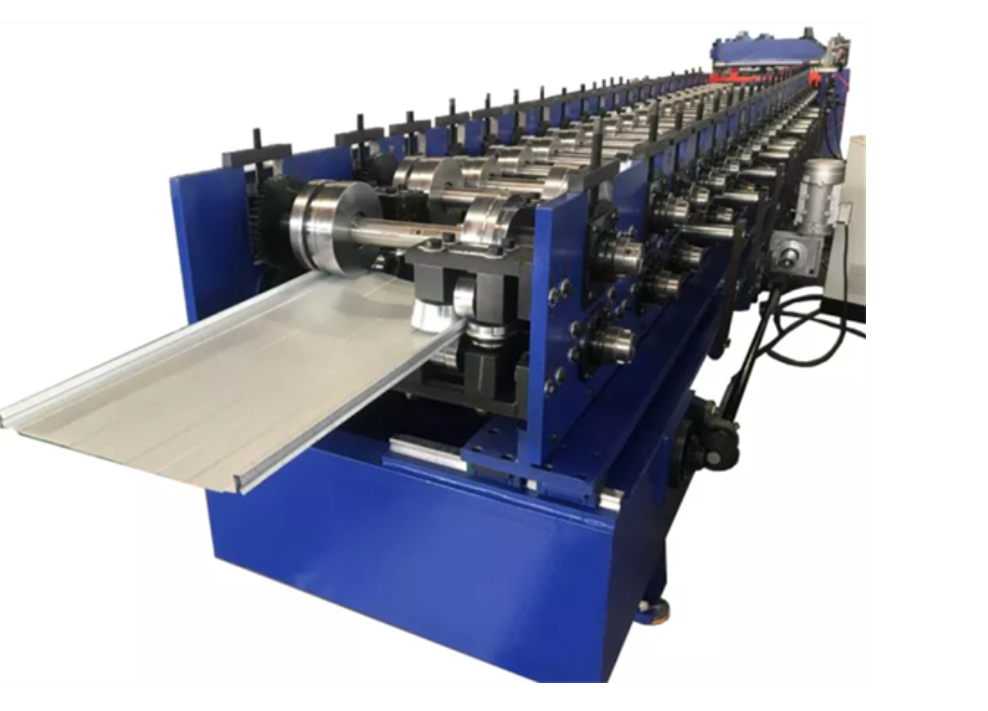The roofing industry has evolved significantly over the past few decades, and much of this progress is due to the introduction and advancement of roofing machines. These machines have transformed the way contractors approach roofing projects—streamlining processes, increasing safety, improving accuracy, and ultimately reducing time and labor costs.
What Are Roofing Machines?
Roofing machines are specialized tools and equipment used to fabricate, shape, and install roofing materials. These machines help automate repetitive tasks like cutting, bending, seaming, fastening, and roll forming metal panels, shingles, or membranes.
By using these machines, roofers can:
- Improve installation precision
- Save on manual labor
- Work faster on large-scale projects
- Reduce material waste
- Ensure safer job site conditions
Types of Roofing Machines
There is a wide range of roofing machines available today, each serving a different function. Below are the most commonly used types:
1. Roll Forming Machines
Roll forming machines are used to shape metal coils into roofing panels. These machines can produce standing seam panels or corrugated sheets in custom lengths directly on-site or a factory.
Key Features:
- Adjustable panel widths
- On-site or in-shop operation
- Suitable for steel, aluminum, copper
Use Case: Creating long, seamless metal roofing panels for residential or commercial buildings.
2. Seaming Machines
Seaming machines are essential for joining metal panels on a roof. These tools mechanically lock panels together, creating a watertight seal.
Types:
- Manual seamers (for small jobs)
- Electric seamers (for faster production)
- Standing seam panel seamers
Use Case: Installing standing seam metal roofs with tight, weather-resistant joints.
3. Automatic Roofing Fasteners
These machines help apply screws or nails quickly and accurately, reducing hand fatigue and improving consistency.
Benefits:
- Speed up installation
- Reduce missed fasteners
- Improve job site safety
Use Case: Securing metal panels or roofing sheets onto underlayment or decking.
4. Hot Air Welders
Common in flat and membrane roofing systems, hot air welders use controlled heat to bond thermoplastic materials like TPO and PVC.
Advantages:
- Creates strong, leak-proof seams
- Ideal for commercial flat roofs
- Reduces the use of adhesives
Use Case: Sealing synthetic membrane seams for low-slope commercial roofs.
5. Panel Curving Machines
Some architectural projects require curved metal panels. Panel curving machines can bend and shape panels into convex or concave curves while maintaining their structural integrity.
Use Case: Custom roofing projects, stadiums, airports, or modern architectural designs.
6. Coil Slitters and Decoilers
Before metal can be shaped into panels, it often needs to be slit into narrower strips or uncoiled from large rolls.
Use Case: Metal fabrication shops or large commercial roofers preparing materials for roll forming.
How Roofing Machines Improve Efficiency
Roofing machines offer several major advantages that directly impact job performance, timelines, and overall costs. Here’s how they increase efficiency:
1. Speed and Productivity
Machines can work faster than manual labor, especially for repetitive tasks like cutting, seaming, and fastening. This translates to shorter project timelines and the ability to take on more jobs.
Example: Roll forming machines can create custom-length panels on-site in minutes, eliminating delays.
2. Reduced Labor Costs
Roofing machines reduce the need for large crews. A two-person team with a seaming machine and roll former can outperform a traditional five-person crew.
Bonus: Less physical strain on workers improves safety and retention.
3. Increased Precision and Quality
Manual installation is prone to human error, while machines offer consistent, repeatable accuracy. The result is cleaner seams, straighter lines, and better-fitting panels.
Benefit: Fewer callbacks and warranty claims due to installation defects.
4. On-Site Customization
Many modern machines are mobile and can be operated directly at the job site. This allows for real-time customization and faster adjustments, especially if site conditions change.
Advantage: Less downtime, and minimal transportation of materials.
5. Material Optimization
Machines are programmed to minimize material waste by cutting precise lengths and reducing offcuts.
Outcome: Lower material costs and reduced environmental impact.
Common Applications of Roofing Machines
Roofing machines are used across a wide range of roofing applications, including:
- Residential Roofing – Roll forming standing seam panels for homes
- Commercial and industrial roofs – TPO/PVC membrane welding and metal panel fabrication
- Agricultural buildings – Corrugated panels formed on-site
- Architectural projects – Curved metal panels for custom structures
- Roofing fabrication shops – Coil slitting and panel production
Choosing the Right Roofing Machine
Before investing in roofing equipment, consider the following factors:
- Project size and scope: Will you use it for small homes or large industrial roofs?
- Material types: Steel, aluminum, copper, or membranes?
- Portability: Do you need on-site capability or in-shop production?
- Budget: Consider initial costs versus long-term labor savings
- Manufacturer support: Choose machines with solid warranties, training, and service options
Leading manufacturers in the roofing machine market include Englert, New Tech Machinery, Swenson Shear, and SFS Group.
The Future of Roofing Technology
As technology continues to evolve, so do roofing machines. Today, many machines offer digital controls, automation, and integration with 3D modeling software. Smart machines can now detect material thickness, adjust pressure, and alert operators to errors—minimizing waste and boosting safety.
In addition, the push for green building practices and net-zero energy construction has driven demand for precise, efficient roofing systems—which roofing machines help deliver.
Conclusion
Roofing machines are revolutionizing the roofing industry. From roll forming and welding to fastening and seaming, these tools increase productivity, improve quality, and lower long-term costs. Whether you’re a small contractor or a large commercial roofer, investing in the right machinery can significantly improve your bottom line.



